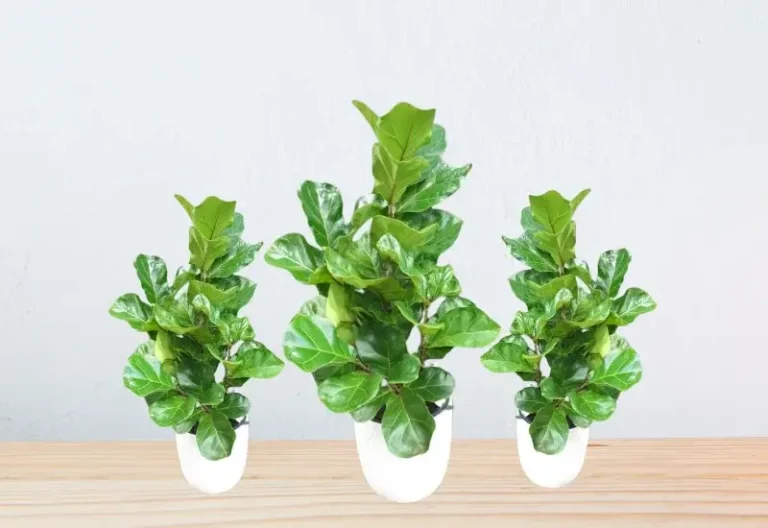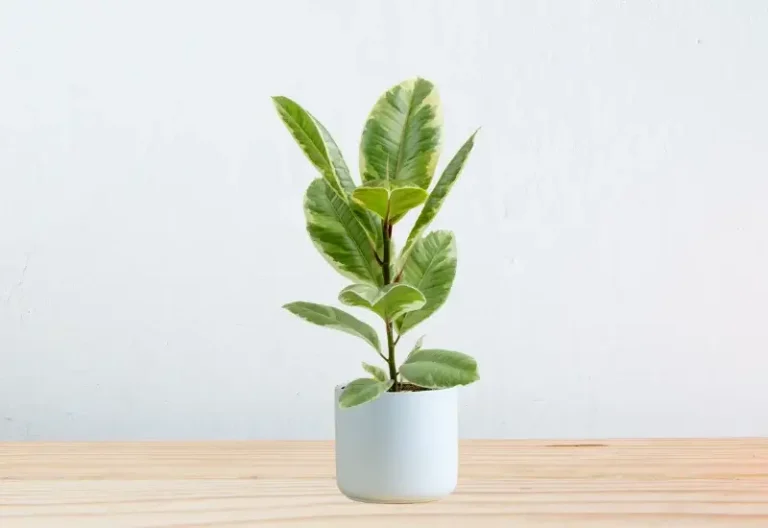Discover Ficus Tineke Varieties and 6 Common Issues
Ficus Tineke is a captivating houseplant, and like all living things, it has its own unique variations and occasional challenges. In this article, we’ll explore the world of Ficus Tineke varieties, with a special focus on the charming Ficus Tineke Ruby.
Ficus Tineke Varieties
Ficus Tineke is a stunning houseplant, loved for its variegated leaves that blend shades of green and creamy white. But did you know there are different variations of this beautiful plant? Each variety has its unique characteristics, adding a touch of individuality to your indoor garden.
Ficus Tineke Ruby
Ficus Tineke Ruby is more than just a pretty face. It’s a distinct variety with remarkable features. The combination of dark green and red hues in its leaves creates an alluring contrast. This contrast intensifies in bright, indirect light, making it an eye-catching centerpiece among Ficus Tineke Varieties.

Characteristics that Make Ficus Tineke Ruby Stand Out
The most distinguishing feature of Ficus Tineke Ruby is, of course, its striking foliage. This variety’s leaves transition from deep green to shades of red and pink. The result is a plant that looks like a work of art. Ficus Tineke Ruby can thrive in similar conditions to its Ficus Tineke siblings, with bright, indirect light and appropriate care.
Care Specifics
- It requires more light than standard Ficus Tineke to maintain its colorful variegation.
- Allow the top inch of soil to dry between waterings.
- Prefers higher humidity; misting or a pebble tray can help.
- Soil: Well-draining, rich potting mix.
- Feed monthly during the growing season with a balanced, liquid fertilizer.
Ficus Tineke Burgundy
The Ficus Tineke ‘Burgundy’ is a variant of the popular rubber plant, known for its rich, deep coloration and subtle variegation.
Appearance and Characteristics
- Large, leathery leaves with a glossy finish.
- Deep green base color with burgundy to purple undertones.
- Less pronounced than standard Tineke, with subtle cream or light green patches.
- Young leaves often emerge with a striking burgundy color.
- Can grow up to 6-10 feet tall indoors when mature.
- Moderate, similar to other Ficus elastica varieties.
- Upright growth with a bushy, full appearance.
Care Requirements
- Light: Bright, indirect light. Can tolerate lower light conditions better than other variegated varieties, but colors may become less intense.
- Water: Allow the top 1-2 inches of soil to dry between waterings. Less frequent watering in winter.
- Humidity: Enjoys higher humidity but adapts well to average indoor conditions.
- Soil: Well-draining, fertile potting mix.
- Temperature: Prefers 60-75°F (15-24°C), avoid cold drafts.
- Fertilizer: Feed monthly during the growing season with a balanced, liquid fertilizer.
Common Issues with Ficus Tineke
- Loss of variegation: Often due to insufficient light, causing the plant to produce more chlorophyll.
- Leaf drop: This can be caused by sudden changes in the environment, overwatering, or underwatering.
- Brown spots: Usually a sign of overwatering or exposure to cold drafts.
- Yellowing leaves: Typically indicates overwatering or nutrient deficiencies.
- Slow growth: Often due to insufficient light or low humidity.
Identifying Common Problems of Ficus Tineke Varieties
As with any plant, Ficus Tineke owners may face common issues. Understanding these challenges is the first step in effectively caring for your plant.
Addressing Concerns, Such as Brown Spots on the Leaves
One common issue that might puzzle Ficus Tineke enthusiasts is the appearance of brown spots on the leaves. Various factors, including underwatering, overwatering, or environmental stress can cause these spots. The good news is that most issues with brown spots are correctable with some thoughtful care adjustments.
Ficus Tineke Brown Spots
Brown spots on Ficus Tineke leaves can be concerning, but they’re not uncommon. To address this issue effectively, it’s essential to understand the potential causes.
Potential Causes and Practical Solutions
The causes of brown spots can include issues such as underwatering, overwatering, or environmental factors like low humidity or sudden temperature changes. Identifying the root cause is key to solving the problem. Adjusting your watering routine, providing adequate humidity, and protecting your plant from drafts can help prevent and resolve brown spots on your Ficus Tineke.
Conclusion
Ficus Tineke Varieties offer a touch of elegance to your indoor garden. Ficus Tineke Ruby, in particular, stands out with its unique foliage. While common issues like brown spots may arise, they can be effectively addressed with the right care and adjustments. By exploring the varieties and addressing potential challenges, you can ensure your Ficus Tineke remains a beautiful and thriving addition to your home. Enjoy the beauty of these exceptional plants and the satisfaction of nurturing them to their full potential.




